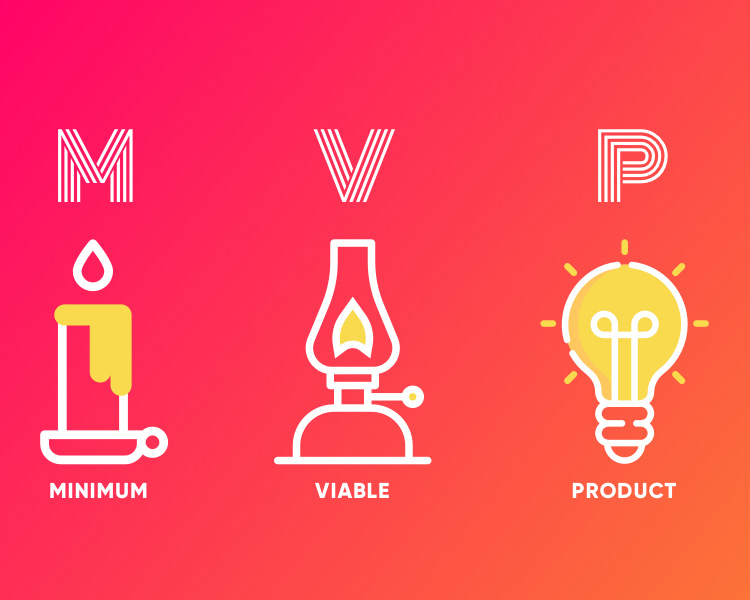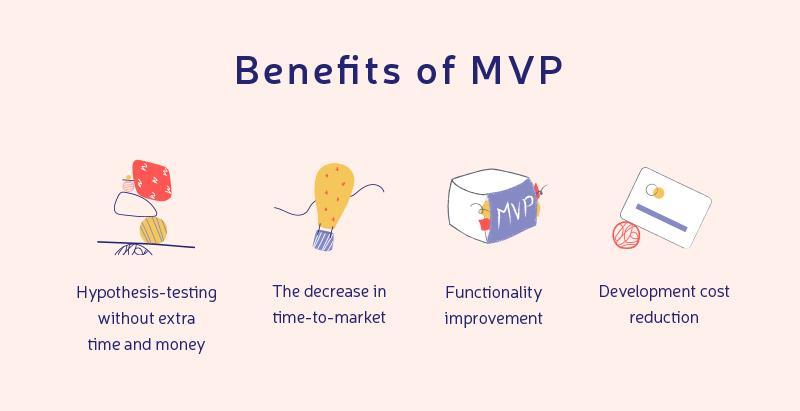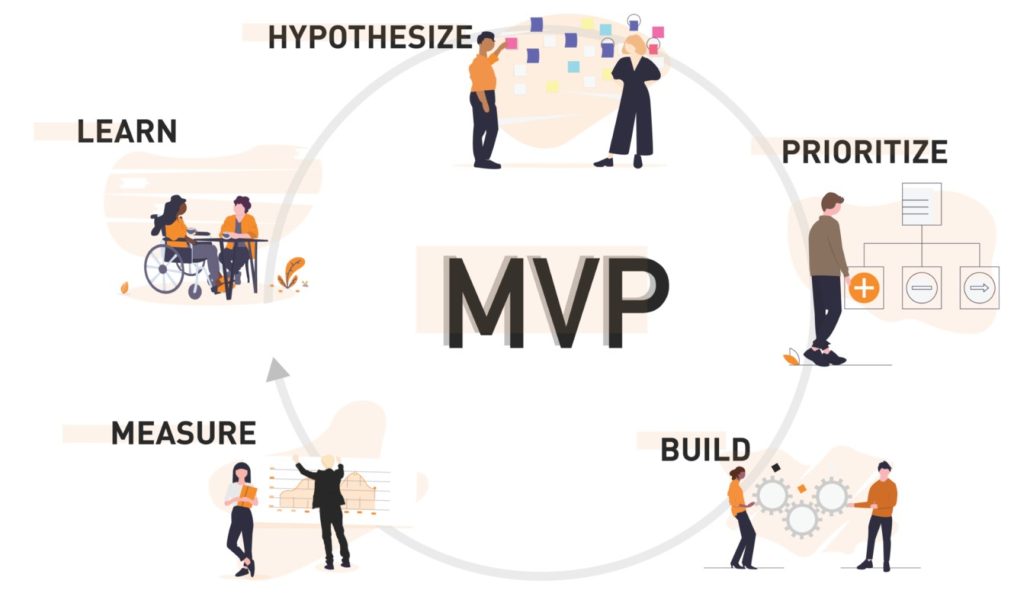The startup ecosystem has its own jargon, and one term that often reverberates in the corridors of entrepreneurship is the Minimum Viable Product, commonly known as MVP. An MVP can serve as a gateway to success or, in some cases, a reality check. But what does it truly mean, and why is it so crucial for businesses, especially startups? This comprehensive guide aims to dissect the concept of MVP, delve into its benefits, highlight real-world examples, and illuminate the diverse types that exist.
The Essence of a Minimum Viable Product
At its core, an MVP is essentially a trimmed-down version of a product containing just enough features to address the immediate needs of early adopters. This allows companies to release it quickly, without heavy investment, and gather valuable user feedback for future development. It’s the very prototype that sees the light of the market, a courageous contender sent to test the waters.
The concept traces its roots back to Lean Startup methodology, emphasizing the importance of learning in the development cycle. By launching an MVP, a business can validate its hypotheses about a product’s market demand, functionality, and user behavior. Such an approach is frequently used not just by startups, but also by established enterprises looking to diversify their portfolio or enter a new market segment.
So, when we ask what is MVP in business, we’re talking about a tool for risk mitigation and market research rolled into one. An MVP is your business’ early emissary, sent out to gather intel and build relations. It’s a smart way to find out what your customers really want, thus avoiding the wastage of resources on features or services they don’t value.

Examples that Illuminate the Concept
Minimum viable product examples abound in today’s tech-savvy world. Take Dropbox, for instance. Instead of spending years developing a full-fledged product, they started with a simple demo video that explained the planned functionality. The video resonated with people, proving that there was demand for such a solution. They then focused on implementing those features which were crucial to the consumer.
Another example of MVP can be found in Airbnb. The platform began as a simple website that featured only their own loft as a rental option. There were no property options or snazzy algorithms; just a basic, straightforward service. The initial traction they gained from early adopters was enough validation for them to realize they were onto something big.
Uber, too, started as an MVP. Initially, it was a simple app connecting iPhone users with drivers in San Francisco. No different pricing models, no advanced algorithms, just a simple “push to request” feature. This approach allowed Uber to measure customer demand and behavior before adding new features like UberPool or UberEats.
It’s imperative to understand that an MVP is not a half-baked, incomplete product, but a fully functional one that addresses a particular set of needs. The purpose is to validate whether these needs are important enough for a broader set of consumers.
One might wonder, what is a MVP if not the most cost-effective, intelligent approach to penetrate a market? These examples illustrate that an MVP allows you to build a customer base while also tweaking the product as per real-world demands.
The Benefits of Deploying an MVP
MVP benefits are manifold, encompassing everything from financial prudence to market validation. One of the most apparent benefits is the speed to market. You’re not spending years perfecting a product without knowing if it will be well-received. Instead, you’re getting your basic version out there fast, allowing real-world testing to inform your subsequent iterations.
Another advantage is cost-effectiveness. Developing a full-featured product without knowing its market viability is not only risky, but also costly. An MVP allows businesses to build upon the features that are most important to their user base, thereby ensuring a more effective use of resources.
Thirdly, an MVP allows for better focus. It compels entrepreneurs and product developers to concentrate on what’s absolutely essential. This focus can lead to higher quality, as resources are spent only on what’s truly necessary for the product to be market-ready.
Fourth, it facilitates user engagement from the outset, which is crucial for a product’s success. Users become part of the development process, and their feedback is used for the product’s evolution.
Lastly, an MVP can serve as a great tool for securing funding. Demonstrating a working model with real users and real feedback is often more convincing for investors than a mere concept or prototype. Thus, an MVP serves as a sort of pitch, but one that comes with practical insights and data.

The Varieties that Exist
There are several types of MVP, each serving different needs and business contexts. The ‘Concierge MVP,’ for example, involves manually carrying out functions that will be automated in the final product. This approach is particularly useful for services that involve complex tasks, enabling the team to understand each step before coding it.
The ‘Wizard of Oz MVP’ is another type, wherein the user believes they are interacting with an automated solution, but there’s actually a human manually executing the tasks behind the scenes. This method helps in gauging customer reactions without fully developing the technology.
Then there’s the ‘Piecemeal MVP,’ which uses existing tools and services to deliver a product or service. This method cuts down on development time significantly and allows the company to focus on assembling these tools uniquely.
Another category is the ‘Single-Feature MVP,’ which focuses on solving just one problem, but doing it extremely well. This is often seen in software tools that excel in a particular task without claiming to be a jack-of-all-trades.
Finally, there’s the ‘Video MVP,’ best exemplified by Dropbox. A simple video or demo can serve as an MVP, giving potential users a taste of what’s to come and allowing companies to measure interest and gather feedback.
When is the Right Time for an MVP?
Timing can be a critical factor when it comes to releasing an MVP. For startups, the best time would often be as early as possible, to start the feedback and iteration process. In the case of established businesses diversifying into new areas, an MVP should ideally follow market research, but precede large-scale investment in product development.
Timing also depends on the nature of the problem your product aims to solve. If it’s a pressing issue that needs immediate attention, then the sooner you launch your MVP, the better. On the flip side, if your product is geared towards long-term needs, then you may have the luxury of more extended market research and planning.
In certain industries, seasonality might play a role. If you’re developing a product tied to a specific season or event, you’ll want to launch your MVP well in advance to capture that market interest.
It’s not just about when you launch, but also how you update. Too many updates can annoy your users, while too few may make them think that you’re not active or responsive. Strike a balance based on user feedback and analytic data.
But remember, timing is never perfect. If you wait for the ‘perfect moment,’ you’ll likely never get your MVP out the door. Sometimes you just have to take that leap of faith.

Crucial Steps for Building an MVP
Creating an MVP is not a spontaneous action, but a well-calculated move. First, market research is crucial. Analyzing your competition and target audience lays the groundwork for what your MVP should include.
Next, define the problem you are solving clearly. This will act as a guidepost for developing your product. Once you’re clear on this, create a list of features that are absolutely essential to solve this problem. Prioritize them based on how critical they are to the core functionality.
Now comes the development phase. Focus on rapid development cycles that are geared towards churning out a functional product without getting bogged down by perfection. Collaborate closely with all stakeholders, be it designers, developers, or business analysts.
Post-development, carry out rigorous testing. Make sure to include a range of scenarios to account for different user behaviors. It’s also advisable to roll out the MVP to a smaller audience first, allowing for a more controlled environment for gathering feedback.
Finally, iterate. Take user feedback seriously, and make improvements accordingly. Don’t be disheartened if your MVP doesn’t meet initial expectations. It’s a learning tool designed to help you refine your final product.
Evaluating the Success of an MVP
So, how do you know if your MVP is successful? One key performance indicator (KPI) often used is user engagement. Are people interacting with your product and, more importantly, returning to it? High engagement rates usually signal a successful MVP.
Another important metric is the Customer Acquisition Cost (CAC) compared to the Lifetime Value (LTV) of a customer. A lower CAC and higher LTV generally indicate a successful product-market fit.
Also, keep an eye on your Net Promoter Score (NPS). This single-question survey can provide significant insights into customer satisfaction and the likelihood of them promoting your product to others.
Feedback is another critical component. It’s not just about the quantity, but the quality of the feedback that counts. Are users pointing out bugs, or are they asking for new features? The former could indicate a problem with the product, while the latter usually signals a high level of interest.
Remember, the MVP is just the beginning. It lays the groundwork for future iterations and serves as a launchpad for your full-fledged product. It’s less about instant success and more about laying a foundation for long-term sustainability.

Challenges and How to Overcome Them
Creating an MVP is not without its challenges. One of the primary hurdles is the balancing act between what features to include and what to omit. The temptation to add ‘just one more feature’ can be high, but this can delay the launch and increase costs.
The risk of underwhelming your audience is another challenge. While an MVP is a scaled-down product, it should still meet a certain quality standard to ensure that it adequately represents your brand.
There’s also the challenge of gathering and interpreting feedback. The whole purpose of an MVP is to learn from real-world usage, but this can become overwhelming if not done systematically.
Overcoming these challenges requires a disciplined approach to product development. Stick to the feature list that addresses the core problem, maintain a relentless focus on quality, and adopt a structured methodology for gathering and acting on feedback.
It’s also advisable to keep stakeholders in the loop. Make sure that everyone, from your development team to your investors, knows what to expect from the MVP. This can help manage expectations and foster a culture of iterative improvement.
Conclusion
The concept of a Minimum Viable Product (MVP) has proven to be a game-changer in the way products are developed and launched. An MVP is not just a cost-saving strategy, but also a sophisticated approach to market validation, customer engagement, and iterative development. Whether you are a fledgling startup or an established business looking to innovate, deploying an MVP can offer invaluable insights and pave the way for long-term success. So, the next time someone asks you, “What is a minimum viable product?”, you’ll have a well-rounded, nuanced answer to give.